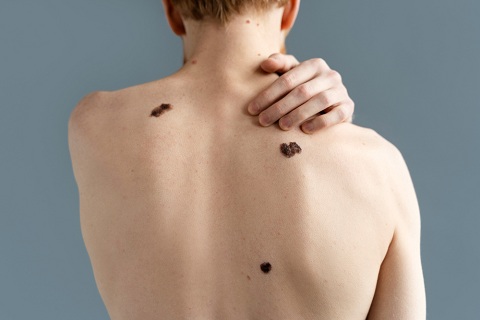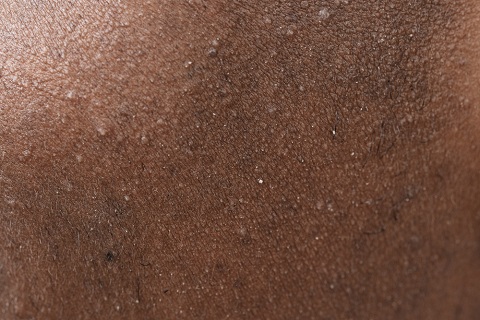Dermillomania, also known as psychogenic excoriation or skin picking disorder, is a condition characterized by the repetitive picking of one’s own skin, often resulting in tissue damage and scarring. This condition can be challenging to understand and manage, making it crucial to delve into its intricacies to provide a comprehensive guide for those seeking information and support.
What Causes Dermillomania?
Psychological Factors
One of the key factors contributing to Dermillomania is psychological. Individuals with this disorder may experience heightened levels of stress, anxiety, or obsessive-compulsive tendencies, leading to compulsive skin picking as a coping mechanism.
Environmental Triggers
Environmental triggers such as boredom, frustration, or feelings of inadequacy can also exacerbate Dermillomania symptoms. The need for sensory stimulation or a sense of control over one’s body can drive individuals to engage in skin picking behaviors.
Neurobiological Factors
Recent research suggests that neurobiological factors, including abnormalities in neurotransmitter function and brain circuitry related to impulse control, may play a role in the development and persistence of Dermillomania.
Recognizing Dermillomania Symptoms
Skin Lesions and Wounds
One of the hallmark symptoms of Dermillomania is the presence of skin lesions and wounds, often in areas that are easily accessible for picking, such as the face, arms, or legs. These wounds may vary in severity, from minor scratches to deep cuts requiring medical attention.
Emotional Distress
Individuals with Dermillomania may experience significant emotional distress related to their skin picking behaviors. Shame, guilt, and embarrassment are common feelings associated with this disorder, leading to social withdrawal and avoidance of situations where their skin condition may be noticed.
Impact on Daily Life
The impact of Dermillomania extends beyond physical symptoms, affecting various aspects of daily life. Interference with work, school, relationships, and self-esteem are common challenges faced by individuals grappling with this condition.
- Intense Urges: Constant urges to pick at the skin can be overwhelming, causing a sense of loss of control and preoccupation with skin imperfections.
- Skin Damage: Picking at the skin can result in visible lesions, scars, and infections, impacting one’s physical appearance and self-esteem.
- Emotional Impact: Dermatillomania often leads to emotional distress, including feelings of shame, guilt, embarrassment, and frustration.
- Social Challenges: Managing dermatillomania in social situations can be challenging, as individuals may feel self-conscious about their skin and may avoid social interactions.
- Work and Productivity: Dermatillomania can affect work or school performance due to distraction, time spent picking, and emotional distress interfering with concentration.
- Relationship Strain: Relationships with family, friends, and partners may be affected by dermatillomania, especially if others do not understand the condition or its impact.
- Financial Costs: Treatment for dermatillomania, including therapy and medications, can incur financial expenses, adding to the burden for individuals and families.
Diagnosing Dermillomania: Seeking Professional Help
Medical Evaluation
A proper diagnosis of Dermillomania involves a thorough medical evaluation by a qualified healthcare professional. Dermatologists, psychiatrists, or psychologists may be involved in assessing the extent of skin damage, evaluating underlying psychological factors, and formulating a treatment plan.
Diagnostic Criteria
The Diagnostic and Statistical Manual of Mental Disorders (DSM-5) outlines specific criteria for diagnosing Dermillomania, including recurrent skin picking resulting in skin lesions, repeated attempts to decrease or stop picking, and significant distress or impairment in social, occupational, or other important areas of functioning.
Preventative Measures for Dermillomania Relapse
Preventing relapse is an ongoing process in managing dermatillomania. Implementing healthy coping mechanisms, identifying triggers, maintaining a structured routine, and addressing underlying emotional needs can help prevent recurrence of skin picking behaviors. Continued support from mental health professionals and support networks is essential for long-term recovery.
Myth-Busting: Common Misconceptions About Dermillomania
There are many misconceptions surrounding dermatillomania, such as viewing it as a mere habit or lack of self-control. It’s important to dispel these myths and educate the public about the complexities of dermatillomania as a mental health disorder. Increased awareness and understanding can reduce stigma and promote empathy and support for individuals with dermatillomania.
FAQs about dermatillomania
Dermatillomania triggers can vary among individuals but may include stress, anxiety, boredom, perceived skin imperfections, tactile sensations, and emotional distress.
Dermatillomania is a chronic condition, and while there is no known cure, individuals can manage symptoms effectively through therapy, medication, and behavioral strategies.
No, dermatillomania is not contagious. It is a mental health condition characterized by repetitive skin picking behaviors and is not spread through physical contact.
Yes, skin picking disorder, also known as dermatillomania or excoriation disorder, is classified as a mental illness characterized by compulsive skin picking leading to skin damage and emotional distress.
Dermatillomania can be managed through various approaches, including cognitive-behavioral therapy (CBT), medication, habit reversal training, mindfulness techniques, stress management, and self-care practices.
Dermatillomania shares similarities with obsessive-compulsive disorder (OCD) and anxiety disorders but is considered a distinct condition. It may co-occur with OCD or anxiety, and individuals with dermatillomania may experience symptoms of anxiety or OCD alongside skin picking behaviors.
Conclusion: Empowering Individuals with Knowledge and Support
Dermillomania is a complex condition that requires a multifaceted approach to understanding and treatment. By unraveling the mystery surrounding Dermillomania and providing a comprehensive guide, we aim to empower individuals affected by this disorder with knowledge, support, and resources to navigate their journey towards healing and recovery.





